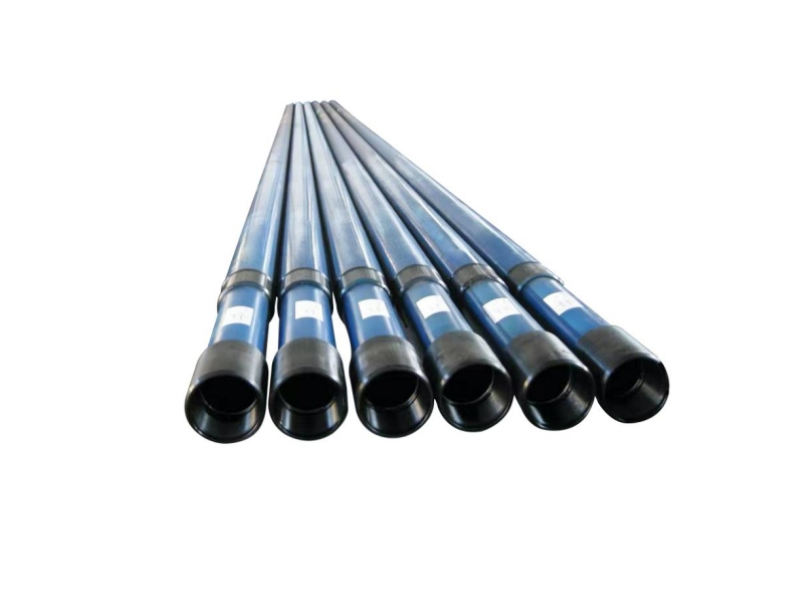Tubing pump is divided into double-valve and three-valve tubing pump according to the number of valves. It consists of a working cylinder, a piston, a floating valve, a fixed valve, etc.:
(1) Working cylinder: It includes an outer tube, a bushing and a clamping coupling. The function of the clamping coupling is to press the multi-section bushing tightly into the outer tube, and the piston reciprocates up and down in the bushing. Since the bushing often gets mixed up and causes the pump to get stuck, the working cylinder is now basically bushing-free.
(2) Piston: It is a hollow cylinder made of seamless steel pipe with threads at both ends for connecting other parts. The outer surface of the piston is chrome-plated and has an annular sand-proof and oil storage groove.
(3) Floating valve: It is also called a discharge valve, which consists of a valve ball, a valve seat and a valve cover. A single-valve tubing pump has a floating valve installed on the upper end of the piston. A double-valve pump has two floating valves, installed on the upper and lower ends of the piston respectively. (4) Fixed valve: also called suction valve, consists of valve seat, valve ball and valve cover.

Features of tubing pump:
(1) Assemble the outer tube, bushing and suction valve on the ground and connect them to the lower part of the oil pipe and lower them into the well first. Then, lower the piston assembly into the pump barrel through the oil pipe with the sucker rod.
(2) Simple structure, low cost. The pump diameter allowed to be lowered is larger than that of the rod pump under the same oil pipe diameter, so the displacement is large.
(3) Since the tubing pump is connected to the lower end of the oil pipe, the oil pipe needs to be pulled out for pump inspection or replacement, and the well repair work is large. Therefore, it is suitable for wells with low pumping depth and high production.
Advantages and disadvantages of tubing pump:
(1) Advantages of tubing pump:
① Large pump diameter and large displacement. Suitable for oil wells with high production, shallow oil wells, high sand content and low gas volume.
② Simple structure, easy processing and low price.
③ Thick pump barrel wall and large load-bearing capacity. ④ For oil wells with large liquid production, a tubing pump with a pump diameter larger than the inner diameter of the oil pipe can be installed through a disconnector to pump oil to meet the liquid production requirements.
(2) Disadvantages of tubing pumps
① Not suitable for deep wells.
② Since the tubing pump working cylinder is connected to the lower end of the oil pipe, the oil pipe needs to be pulled out when inspecting or replacing the pump.
③ Not suitable for oil wells with large gas volumes.
As a common artificial lifting device, tubing pumps have been widely used in shallow wells and high-yield oil wells due to their simple structure, low cost, and large displacement. Of course, in the process of use, it is also necessary to select the appropriate pump type according to the well conditions to achieve better results.
We also fully understand the various challenges you will encounter in actual production, such as frequent pump inspections, complex downhole operations, and insufficient pump life. For this reason, we have continuously improved in product research and development and process optimization, and launched a series of tubing pumps that are more wear-resistant and more reliable to help you reduce maintenance costs and improve production efficiency.
If you have any questions about pump selection, operation, or maintenance, please feel free to contact us. We will provide professional advice and solutions based on your needs. We hope that our products and services can bring more convenience and security to your oil well production.

